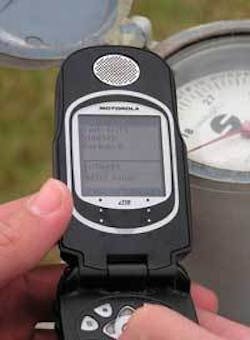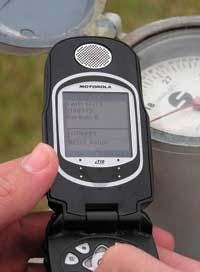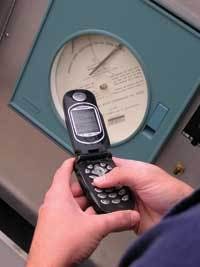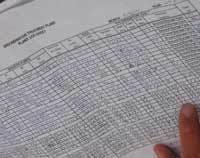Cellular Technology Automates Field Data Collection and Reporting
Municipal Operations and Consulting (MOC), an independent water operations and maintenance company headquartered on the outskirts of Houston, TX, labored with the large volume of recorded data required to operate and maintain their client’s 26 water plants, 15 waste treatment plants and 32 lift stations.
The company logged almost 900 different data points on a daily basis across a large, heavily congested area. Once data log sheets were collected at the end of the month, the owners spent hours reviewing and entering them into Excel spreadsheets. They spent even more time cutting and pasting critical data into required compliance reports such as the Texas Commission on Environmental Quality’s Monthly Operating Report.
“We had real concerns about the inefficiencies of this process. We felt the best approach was to implement a data management service provided by BirdNest Services Inc. which utilizes cellular and internet technology,” said Greg Dubiel, MOC General Manager.
“We were looking for a low-cost, easy to use system that would help us improve overall workforce efficiency. We wanted to be able to enter data from the field just one time. This would minimize time spent in the field and office data handling and would eliminate any associated errors in data processing and report generation,” Dubiel said.
MOC staff reasoned that improved data management would also result in improved internal and external communications and customer service. It would also help them expand or improve other operational activities such as preventive maintenance measures or asset condition assessments. They wanted to stay ahead of new SEC rules, such as Sarbanes-Oxley Regulation SK, and other new accounting interpretations which were expanding the scope of required reports and accelerating disclosure times.
Selection criteria for the technology to be deployed were specific: The service had to be easy to roll out and simple for operators to use while incorporating safeguards to insure data security. A minimum investment in new equipment and software - and related training - was vital, plus easy integration with existing field and office systems. The total system had to be cost-effective and fit within their overhead budget.
MOC quickly ruled out various software programs designed to run on portable devices such as laptops and PDAs, given their budget constraints.
“Using software-as-a service on cellular phones had several advantages,” Dubiel said. “Cell phones are easy to use. Operators really liked the idea of carrying one device and getting rid of log sheets. Management liked it because the costs are a lot lower than other solutions, they didn’t have to spend a lot of time learning how to use the service and they don’t have to spend hours generating their monthly reports.”
BirdNest Services designs software-as-a-service business applications using cellular phones as the remote field entry device. The company’s application, BirdToolsTM, is a commercially available data-collection service that includes an Internet-based data management function.
Data is transmitted through the cellular packet data network to the BirdNest server. Once received, information is readily available for management functions such as editing, compiling, storing, exporting, graphing, printing or sharing from any Internet-connected PC with an authorized user id, password and assigned access privileges.
Data is stored in XML format, which is compatible with SCADA systems and most back office systems, such as commercial asset management programs.
MOC uses client-specific User, Facility and Element data tables to select what readings need to be collected at which facility and who will collect them. This is called “building a user profile.” Once a profile has been created it is downloaded wirelessly to the field user’s cellular phone.
A field user will log on to his BirdNest bookmarked site and enter his unique user id and password to access the facilities he needs to monitor. Prompts on the cell phone screen are then answered one at a time using the cell phone keyboard. If responses for critical readings exceed preset limits, the operator is asked to validate the entry to ensure accurate data submission. Once the information has been transmitted it is readily available for viewing or other data management functions.
“We have much better control over data being recorded by our operators,” Dubiel said. “We see it every day in a nice, neat electronic log sheet that can be accessed from any of our offices or any Internet-connected PC, if needed. We use their on-demand report generator to create reports or analyses on the fly or to save for repeat usage, such as our monthly Pumpage or Disinfection reports. We can create a report on any data we collect with BirdToolsTM which saves us hours in the office and allows us to spend more time focusing on our customers.”
The end result is that MOC operators are now using a device with which they already felt comfortable. They like that it makes their job easier and only have to carry one device. They take advantage of time-saving features including built-in element calculations and validations, quick access to previous readings and elements sorted according to individual facility designs.
Managers take advantage of timely data submission to gain efficiency in managing their data and operations. They also have gained confidence in data accuracy and reliability. They are pleased with the ability to share information easily with internal and external customers and their improved responsiveness to operational needs and improved customer service. All objectives originally established are being met and surpassed.
About the Authors:
Mary White is Sales and Marketing Director, BirdNest Services, Houston, TX. Greg Dubiel is General Manager of Municipal Operations & Consulting (MOC), Houston.



